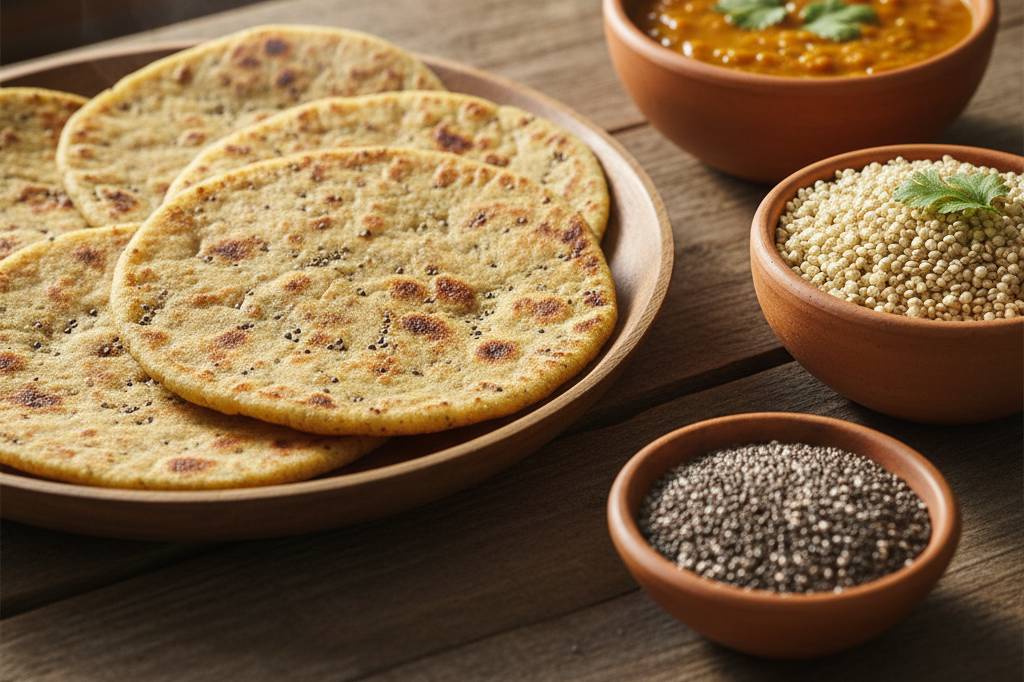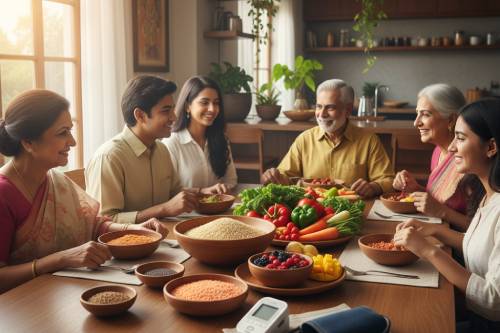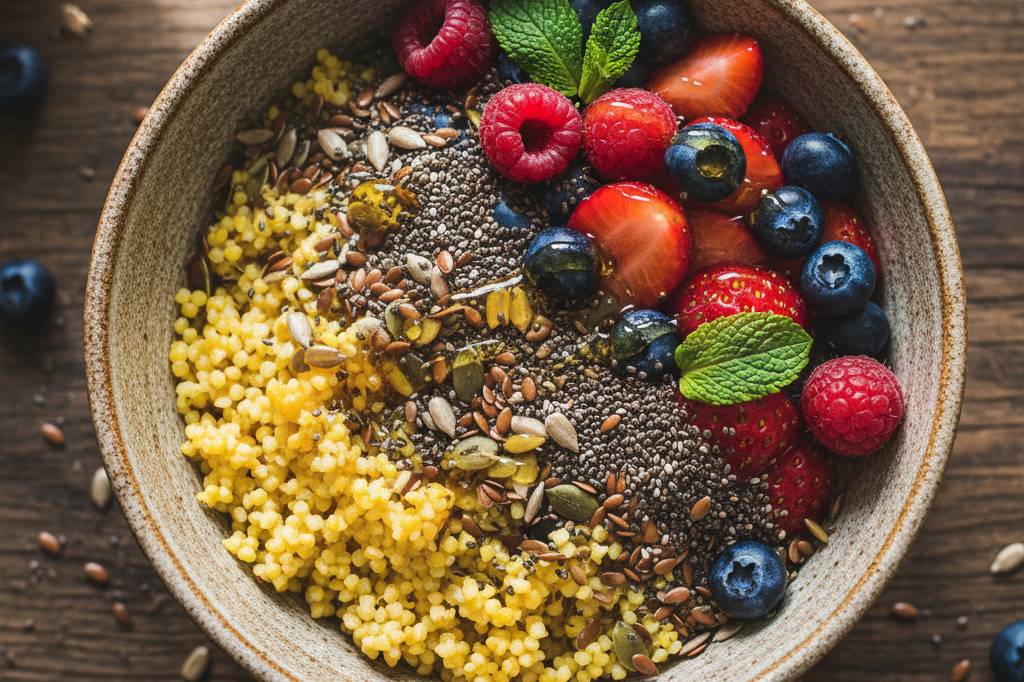For many Indians, the word “roti” evokes memories of steaming hot chapatis straight off the tava, paired with fresh sabzis and pickles. Wheat has been the cornerstone of Indian meals for generations, but a growing awareness of gluten intolerance, celiac disease, and lifestyle-focused health choices has led many to explore gluten-free alternatives. There is a common misconception, however, that gluten-free means tasteless or boring. This could not be further from the truth. Ingredients like chia and quinoa are transforming gluten-free eating, proving that nutritious choices can be both flavorful and satisfying.
The Nutritional Power of Chia and Quinoa
Gluten-free flours like quinoa and chia are more than just substitutes—they are nutritional powerhouses. Quinoa, often referred to as a “supergrain,” is packed with complete protein, meaning it contains all nine essential amino acids. It is also rich in fiber, magnesium, iron, and potassium, supporting heart health, digestion, and energy balance. Chia seeds, tiny as they are, bring a remarkable concentration of omega-3 fatty acids, antioxidants, and soluble fiber. These nutrients help regulate blood sugar levels, improve cholesterol profiles, and promote gut health.
When incorporated into chapati dough, these ingredients maintain a soft, pliable texture and a subtle nutty aroma, offering a satisfying bite without the chewiness typically associated with wheat. This makes them an excellent choice for families seeking to embrace gluten-free options without compromising the familiar comfort of traditional Indian meals.
Taste Meets Versatility
Chia and quinoa chapatis are not only healthy—they are versatile. Their mild flavors blend seamlessly with classic Indian dishes, from spicy curries to tangy dals. They also serve as a canvas for innovation, allowing home cooks to experiment with fillings like spiced paneer, roasted vegetables, or herb-infused spreads. The chia seeds add a delicate crunch, while quinoa contributes a slightly nutty undertone, enhancing the sensory appeal of every bite.
Beyond traditional meals, these chapatis can be adapted for modern dietary preferences. Pairing them with avocado spreads, yogurt-based dips, or sautéed greens creates a fusion of Indian and global flavors that is as enjoyable as it is nutritious. This versatility ensures that gluten-free eating never feels restrictive, allowing people to enjoy variety while nourishing their bodies.
Health Benefits That Go Beyond Gluten-Free
The advantages of chia and quinoa chapatis extend far beyond the absence of gluten. High fiber content ensures longer satiety, reducing unnecessary snacking and supporting weight management. The protein in these flours helps maintain muscle health and sustained energy levels throughout the day. Their low glycemic index prevents rapid spikes in blood sugar, making them an ideal choice for people managing diabetes or seeking heart-friendly options.
In a country like India, where lifestyle diseases such as diabetes, hypertension, and obesity are increasingly common, choosing nutrient-dense alternatives can make a meaningful difference. By replacing refined wheat with supergrains and seeds, families can reduce the risk of chronic diseases while still enjoying meals that satisfy the palate.
Gluten-Free is a Lifestyle, Not a Compromise
Switching to gluten-free eating often requires a shift in mindset. It is not about giving up tradition or taste but about evolving them. Chia and quinoa chapatis allow families to maintain cultural meal patterns while integrating modern nutritional science. Breakfast, lunch, or dinner, these chapatis can be served with an array of accompaniments—fresh vegetables, lentils, fermented foods, or spiced spreads—making every meal both wholesome and enjoyable.
Mindful eating is at the heart of this movement. Choosing foods that support health without sacrificing flavor promotes a sense of well-being and empowers individuals to take control of their diets. The rise of chia and quinoa chapatis reflects this philosophy, offering a simple yet effective way to marry taste, health, and convenience in everyday meals.
Cooking Tips for Perfect Gluten-Free Chapatis
Achieving the perfect texture with gluten-free chapatis requires a few simple tweaks. Using warm water to knead the dough improves pliability, while adding a small amount of oil or yogurt can enhance softness. Rolling the dough evenly ensures uniform cooking, and lightly pressing the chapatis on a hot tava allows them to puff gently, just like traditional wheat rotis. Over time, these small techniques help maintain the familiar experience of home-cooked rotis, making the transition to gluten-free seamless and enjoyable.
Conclusion: Deliciously Gluten-Free
The journey to healthier eating does not mean sacrificing flavor. Chia and quinoa chapatis demonstrate that gluten-free alternatives can be delicious, nutritious, and satisfying. By embracing these supergrains, families gain a practical, versatile, and flavorful way to improve their diets and safeguard long-term health. Gluten-free is no longer synonymous with compromise—it is a celebration of innovation, nourishment, and culinary creativity. With each bite, chia and quinoa chapatis prove that eating well can be an indulgent and enjoyable experience, showing that taste and health can truly coexist on the same plate.




Leave a comment
This site is protected by hCaptcha and the hCaptcha Privacy Policy and Terms of Service apply.